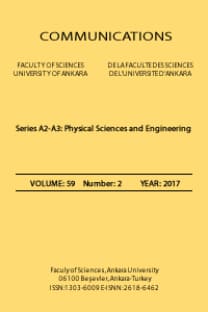Determination of the surface topography in rill erosion by imaging techniques
Determination of the surface topography in rill erosion by imaging techniques
Rill erosion, depth image, kinect sensor, raspberry pi mobile systems, surface topography,
___
- Rieke-Zapp, D. H., Nearing, M. A., Digital close range photogrammetry for measurement of soil erosion, Photogramm. Rec., 20 (109) (2005), 69-87.
- Foldager, F. F., Pedersen, J. M., Skov, E. H., Evgrafova, A., Green, O., LiDAR-Based 3D scans of soil surfaces and furrows in two soil types, Sensors, 19 (3) (2019), 661, https://doi.org/10.3390/s19030661.
- Stefano, C. D., Palmeri, V., Pampalone, V., An automatic approach for rill network extraction to measure rill erosion by terrestrial and low-cost unmanned aerial vehicle photogrammetry, Hydrol. Process., 33 (2019), 1883-1895, https://doi.org/10.1002/hyp.13444.
- Eitel, J. U. H., Williams, C. J., Vierling, L. A., Al-Hamdan, O. Z., Pierson, F. B., Suitability of terrestrial laser scanning for studying surface roughness effect on concentrated flow erosion processes in rangelands, Catena, 87 (3) (2011), 398-407, https://doi.org/10.1016/j.catena.2011.07.009.
- Li, P., Ucgul, M., Lee, S. H., Saunders, C., A new method to analyse the soil movement during tillage operations using a novel digital image processing algorithm, Comput. Electron. Agric., 156 (2019), 43-50, https://doi.org/10.1016/j.compag.2018.11.009.
- Saygın, S. D., Süreç tabanlı modellemede parmak erozyonu toprak duyarlılığı parametresinin fiziksel olarak belirlenmesi, (2020). Program Kodu: 3001 Başlangıç AR-GE. Proje No: 1180111.
- Sharma, K., Kinect sensor based object feature estimation in depth images, IJSIP, 8 (12) (2015), 237-246, http://dx.doi.org/10.14257/ijsip.2015.8.12.23.
- Mobini, A., Behzadipour, S., Foumani, M. S., Accuracy of kinect’s skeleton tracking for upper body rehabilitation applications, Disabil. Rehabilitation. Assist. Technol., 9 (4) (2013), 344-352, https://doi.org/10.3109/17483107.2013.805825.
- Pinto de Oliveira, H. F., An Affordable and Practical 3D Solution for the Aesthetic Evaluation of Breast Cancer Conservative Treatment, (2013). Ph.D. Thesis, Faculdade De Engenharia Da Universidade Do Porto, Programa Doutoral em Engenharia Electrotecnica e de Computadores, Porto.
- Mallick, T., Das, P. P., Majumdar, A. K., Characterizations of noise in kinect depth images: a review, IEEE Sens. J., 14 (6) (2014), 1731-1740, https://doi.org/10.1109/JSEN.2014.2309987.
- ISSN: 1303-6009
- Yayın Aralığı: Yılda 2 Sayı
- Başlangıç: 2019
- Yayıncı: Ankara Üniversitesi
A study on modeling growth model of Adana pigeons
Utilization of deep learning architectures for MIMO detection
Sümeye Nur KARAHAN, Aykut KALAYCIOĞLU
Determination of the surface topography in rill erosion by imaging techniques
Design and implementation of a microcontroller based split air conditioner control system
A method for analyzing suspect-filler similarity using convolutional neural networks
Evaluation of the impact of I/Q imbalance compensation on communication performance
